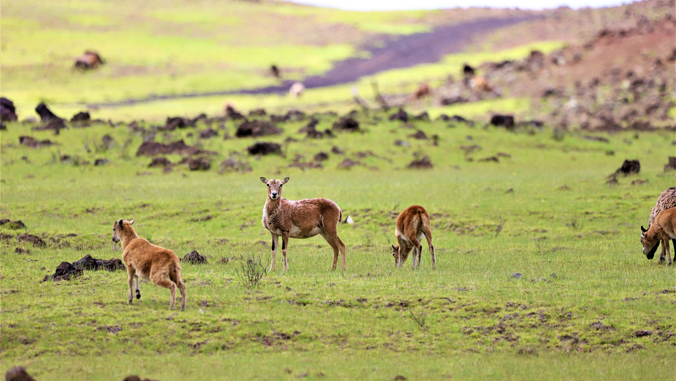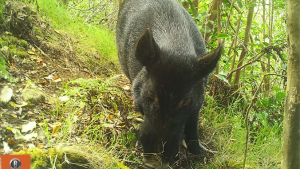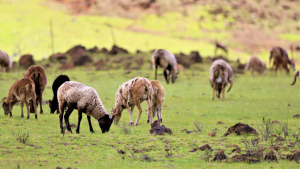
One of the largest studies on wildlife activity—involving more than 220 researchers, 163 mammal species and 5,000 camera traps worldwide—reveals that wild animals react differently to human activity levels depending on where the animals live and what they eat. Hawaiʻi-based authors include University of Hawaiʻi at Mānoa researchers Melissa Price and Derek Risch.
The study used data from before and during the COVID-19 lockdowns to examine wild mammal behavior amid changing human activity levels. Bigger herbivores—plant-eating animals such as deer—tend to become more active when humans are around, while meat-eaters such as wolves tend to be less active, preferring to avoid risky encounters. Hawai'i lacks native land-based mammals other than the Hawaiian Hoary Bat, an insectivore. Herbivores such as Axis Deer and feral goats, and small predators such as feral cats, were introduced by humans in the last few centuries.

"The tendency for large herbivores to become more active near humans presents a number of challenges especially here in Hawaiʻi where nearly all of our terrestrial mammals are non-native," said Risch, a researcher in the College of Tropical Agriculture and Human Resources. "Animals being more active and increasingly nocturnal around humans increases the likelihood of harmful human-wildlife conflicts like car strikes and disease transmission. People can help by appropriately disposing of trash and refraining from feeding wild animals."
Why it matters
These findings highlight the importance of measures to minimize any detrimental effects of human disturbance on wildlife, especially in Hawaiʻi where many of our wildlife are endangered with less than a few thousand or even a few hundred individuals remaining.
"In the Hawaiian Islands, people are very active in coastal areas where our native seabirds and sea turtles are impacted by human activity, artificial lights, plastic pollution, and invasive cats, rats, and mongoose," said Price, a UH Mānoa professor of wildlife. "Knowing that our choices matter is the first step in taking better care of our native plants and animals."
Communities can help by turning off artificial lights during the seabird fledgling season in October and November, participating in beach clean-ups and other mālama 'āina volunteer days, and keeping pets on a leash when outside.
In more remote areas, keeping human activity low may be necessary to protect sensitive species. In areas where people and animals overlap more, such as cities, nighttime is an important refuge for wildlife, and keeping it that way can help species survive—and humans thrive. For example, efforts such as the Dark Skies Initiative protect seabirds and sea turtles while improving human health and our ability to see the stars.

Unique opportunity
Urban animals such deer or feral pigs may become more active around people, as they get used to human presence and find food like garbage or plants, which they can access at night. But animals living farther from cities and other developed areas are more wary of encountering people.
"COVID-19 mobility restrictions gave researchers a truly unique opportunity to study how animals responded when the number of people sharing their landscape changed drastically over a relatively short period," said lead author Cole Burton, an associate professor of forest resources management at University of British Columbia and Canada Research Chair in Terrestrial Mammal Conservation.
The study was published March 18, in Nature Ecology and Evolution.






